Details October 2023
- Delegated grading distribution by group membership
- Partial credit auto-distribution for correct answers for Multiple Choice questions
- Deselect answer choice for Multiple Choice question
- Send Reminder from Gradebook list and grid views
- Anonymous comments in Bb Annotate
- Sorting controls for manually added gradable Items
- Copying grading schemas from course to course
- Last access course alert default set to 15 days
- Student Activity report for Assessments enhancements for small devices and the Mobile app
- Messages tool availability settings respected in Mobile App
Delegated grading distribution by group membership
Instructors sometimes distribute the grading workload for an assessment to multiple graders. This is a popular practice in larger classes. Instructors can assign graders to groups of students with the new delegated grading option. Each grader will only see the submissions made by students in the group(s) assigned to them.
Delegated Grading can be used with all available group types. This first release of Delegated Grading supports assignment submissions from individual students. Tests, group assessments, and anonymous submissions are not supported at this time.
After selecting the Delegated Grading option, select the appropriate Group Set. Instructors can assign one or more graders to each group in the group set. If multiple graders are assigned to the same group, they will share the grading responsibility for the group members.
Graders assigned to a group of students will only see submissions for those students on the assignment’s submission page. They can only post grades for their assigned group members. Any unassigned instructors enrolled in the course will see all student submissions on the assignment’s submission page. They also post grades for all students.
If you would like to delegate randomly to course graders, first set up a randomized Group Set.
At least one Group Set complete with Groups must be present in the course before using the Delegated Grading option.
Image 1. Instructor view of the assessment Settings panel with the Delegated Grading option enabled
Image 2. Instructor view of the Delegated Grading interface where the Group Set to be used for distributing the grading workload is selected
Image 3. Instructor view of the Delegated Grading interface with a Group Set selected
Image 4. Instructor view of how to align graders to a group to distribute the grading workload
Image 5. Instructor view of the completed delegated grading set up where all groups have been aligned to one or more graders
Partial credit auto-distribution for correct answers for Multiple Choice questions
Multiple-choice questions with more than one correct answer are valuable assessment tools. Also known as multiple-answer or multiple-select questions, these questions assess comprehensive understanding. They also promote deeper learning and higher-order thinking skills.
Some instructors wish to award partial credit for these question types. This practice awards students who have a partial understanding. It also fosters a positive learning experience.
In the past, instructors had to enter a value for partial credit percentage for each option. Now, we auto-distribute partial credit across correct answer choices. This distribution provides efficiency and saves instructors’ time. If desired, instructors can edit the values if some correct answer options warrant more or less credit. Values for correct answers must sum to 100%.
Image 1. Question credit auto-distributes across correct answer options; values can be edited
For administrators: This feature is available for all Ultra courses. There are no configurations needed.
Deselect answer choice for Multiple Choice question
In the past, a student could select an answer choice for a multiple-choice question, change their mind, and mark another answer choice. However, the student wasn’t able to deselect an answer choice to return the question to an unanswered state. Now, students can deselect an answer choice. Deselecting a choice is helpful when a student doesn’t want to guess. Deselecting a choice also allows the student to skip the question and return to it using the unanswered questions filter.
Send Reminder from Gradebook list and grid views
Part of effective teaching is student support. Instructors may want to send a reminder to students or groups who haven’t yet made a submission for an assessment. To make this easy, we have added a “Send Reminder” option to items in the Gradebook.
Reminders is an option for all gradebook items, including LTI and third-party tools. Please note: Reminders can only be sent if you are enrolled in the course. The item must be visible to students and have no release conditions. Future updates will allow you to send reminders for items with release conditions.
From the Gradebook list view, this option is in the overflow menu.
Image 1. Send Reminder option from list view
Instructors may access the “Send Reminder” option in the grid view by selecting the gradebook column header.
Image 2. Send Reminder option from grid view
Reminders are sent as a blind carbon copy to non-submitting students or groups as a course message.
Instructors can view the sent message in their course messages. If messages are off and the reminder is sent as an email, the instructor will receive a copy of the email.
When sending the reminder, the instructor will need to confirm their intent to send the reminder. The confirmation displays a count of the number of non-submitting students or groups who will receive the reminder.
Image 3. Send Reminder confirmation
Image 4. Instructor view of the reminder as a course message
For anonymous grading, non-submitting students receive the reminder via e-mail. This ensures that anonymity is preserved.
Anonymous comments in Bb Annotate
In some grading scenarios, instructors prefer their students not to identify the individuals offering feedback on their submissions. To enhance anonymity, graders can now post Bb Annotate comments without disclosing their names. Instructors have the option to mark inline comments as anonymous when creating them or even after comments are added.
Image 1. Setting a comment as anonymous while editing the comment
Image 2. Anonymous comment as seen by the student
For administrators: A new configuration option, “Enables anonymous comments in Bb Annotate”, appears on the Ultra Experience Management page in the Administrator Panel. The default state is “off.” The feature will have a phased release that may occur after the release date.
Sorting controls for manually added gradable Items
Sorting controls help instructors organize and find the information in the gradebook. Instructors can now use sorting controls on the grades page for manually created items. The sorting controls enable sorting in both ascending and descending order. Instructors can sort the following information:
- Student name
- Grade
- Feedback
- Post status
The applied sorting order is temporary and resets when you leave the page.
Sorting controls can be applied to one column at a time. When you sort another column, items will order according to the selected column.
Image 1. Instructor view of sorting controls on the grades page for a manually added gradable item
For administrators: This feature is available for all Ultra courses. There are no configurations needed.
Copying grading schemas from course to course
Instructors can now copy individual grading schemas from Ultra and Original courses to other Ultra courses. Previously, you had to copy all schemas from the Original course. From the new Grading Schemas folder on the Copy Items panel, you can select which schemas to copy.
A course may contain up to 100 grading schemas. If the number of selected schemas plus that already in the course exceeds this limit, the system will copy as many schemas as possible up to a total of 100. An informative banner alerts the instructor of this situation so they can take appropriate action.
Image 1. Grading Schema folder now appears as an option in Copy Items
Image 2. Selected Grading Schemas to copy
Last access course alert default set to 15 days
User feedback is key. Users told us that the frequency of access to Ultra courses depends on several factors, such as workload or class meetings recurrence. Previously, the default value for the “Number of days a student is inactive” was 5. Now, the default is 15. The alert for overall grade percentage is blank by default and is unchanged.
As before, instructors can adjust or remove course alerts.
The new default value of 15 applies to new courses and courses that did not have values set for course alerts. Course alerts values set in existing courses are maintained.
Image 1. Alerts Settings panel
For administrators: This feature is available for all Ultra courses. To view the Course Activity and Student Activity Details reports, the user role needs to have the “Course/Organization Control Panel (Grade Center) > View Grades” privilege.
Student Activity report for Assessments enhancements for small devices and the Mobile app
Instructors lead busy, on-the-go lives and access Learn from a variety of devices. To provide a better experience on small devices, we have added more capabilities for the Student Activity report for assessments. Instructors can access this report from their mobile devices with greater flexibility.
Now, in addition to a student’s name and grade, instructors can view student information on small screens:
- Late submission indicator
- Date opened
- Date started
- Attempts
Instructors can download the report in CSV format from small devices.
Image 1. Student Activity report for an assessment on a small screen
The “Time to open” metric is no longer available in the Student Activity report. This metric was deprecated based on user feedback. The activity timeline chart is not available on small devices due to space restrictions. The messaging option from this report is planned for a future release.
Messages tool availability settings respected in Mobile App
With this release, the mobile app aligns to the course settings for Messages. If Messages are “off” for the course, the Messages option is not displayed in the mobile app. This applies to both courses and organizations. When Messages are “on”, the messages options for students are enforced on the app.
For administrators: This feature is available for all users of the Mobile App. No action is needed from users who have enabled automatic updates on their devices. Users who have disabled automatic updates on their devices must download the update.






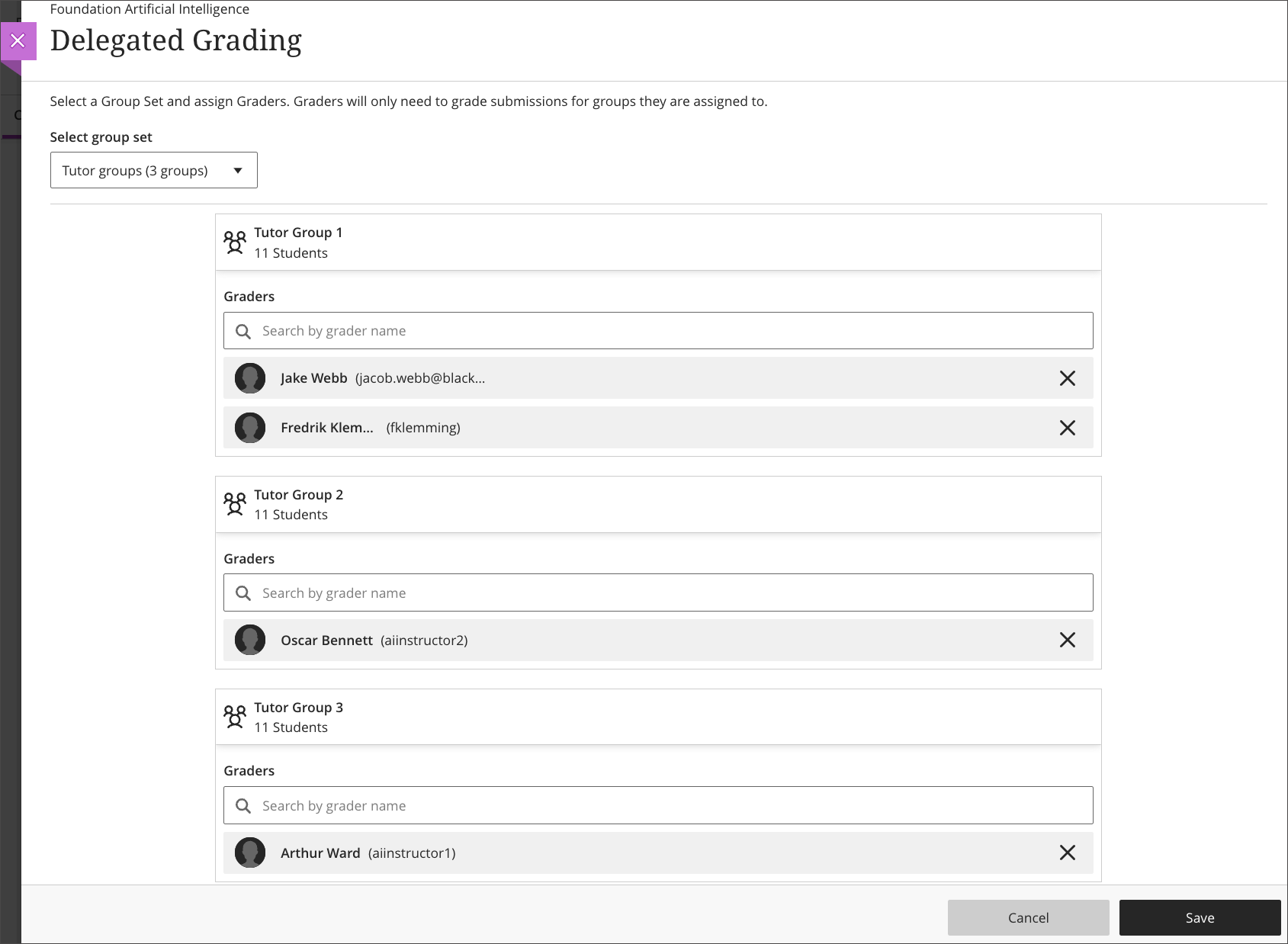
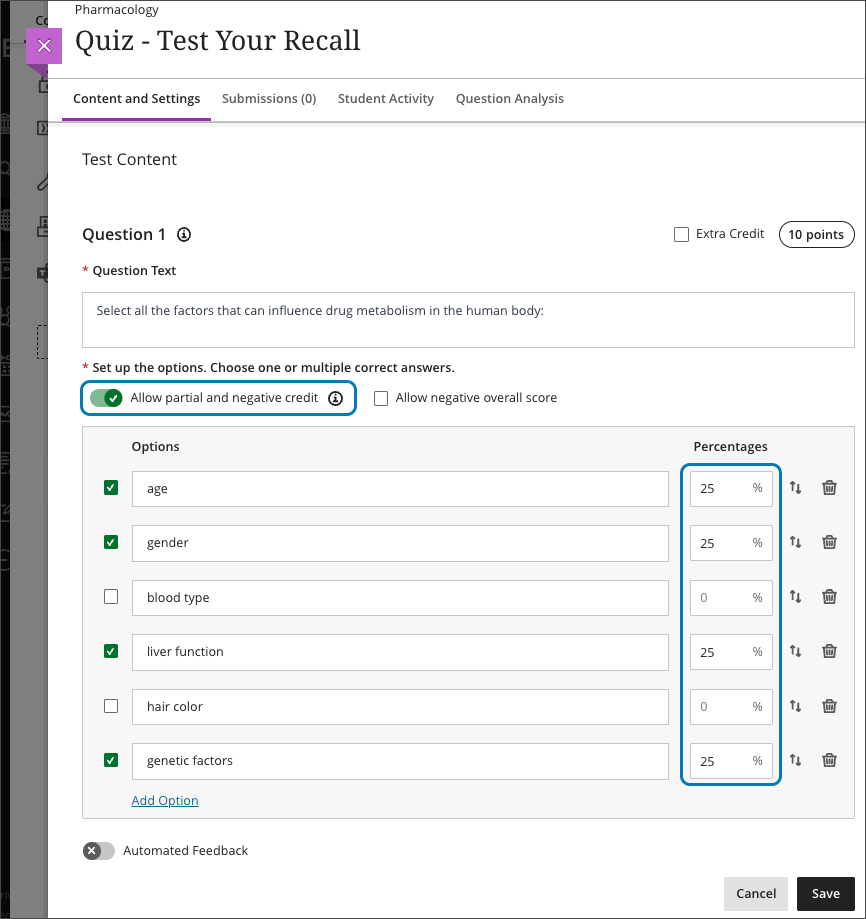
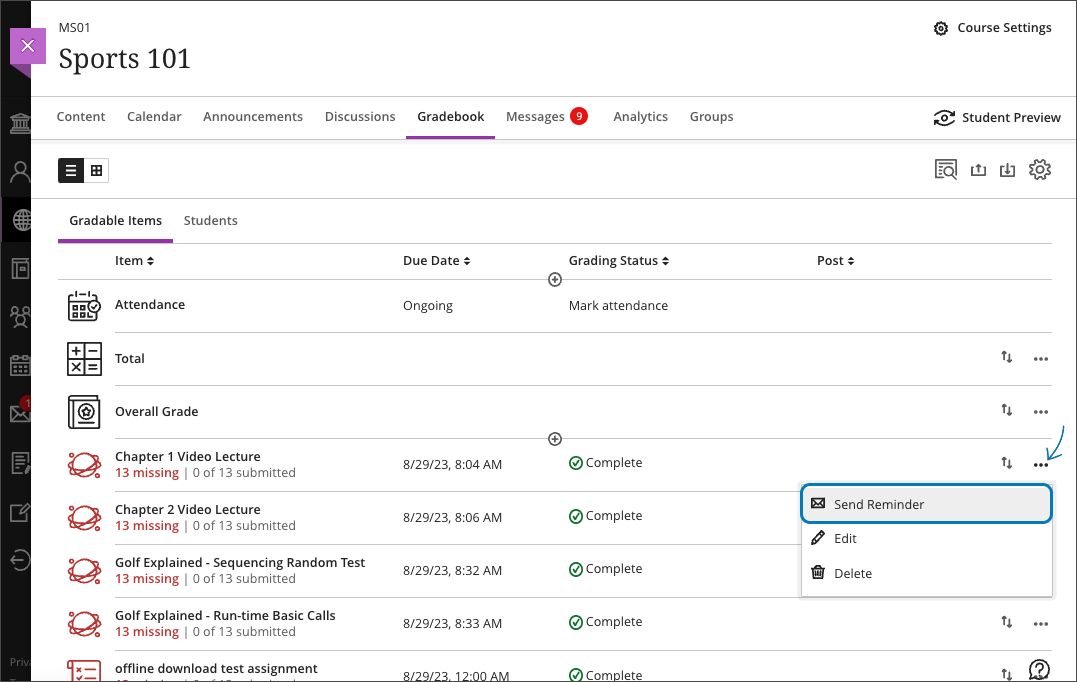
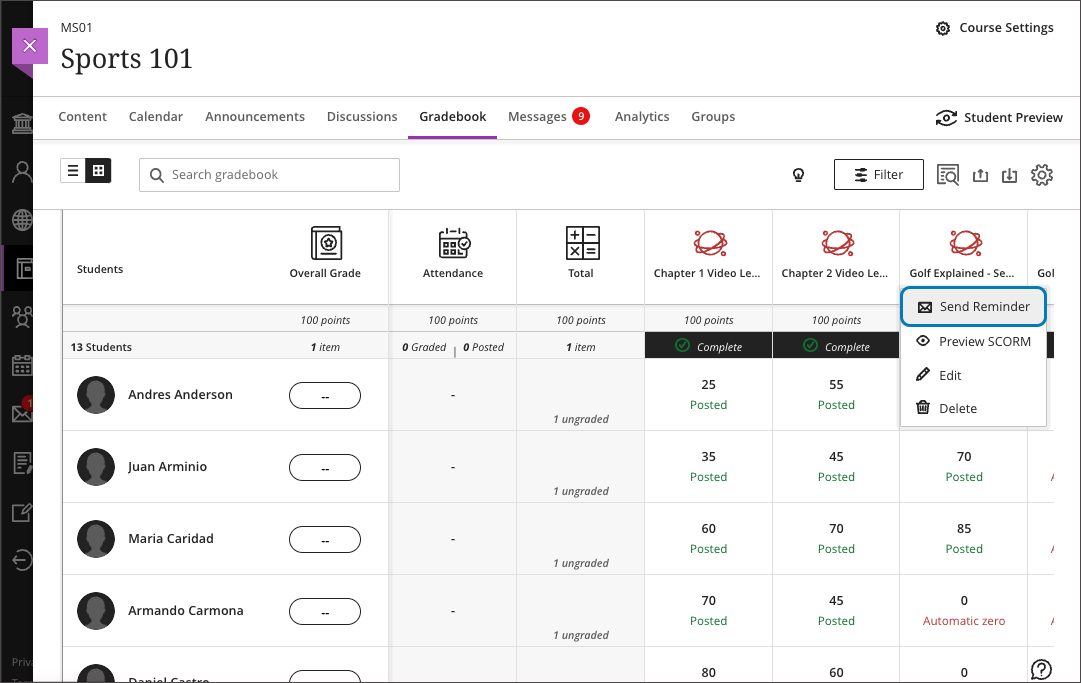
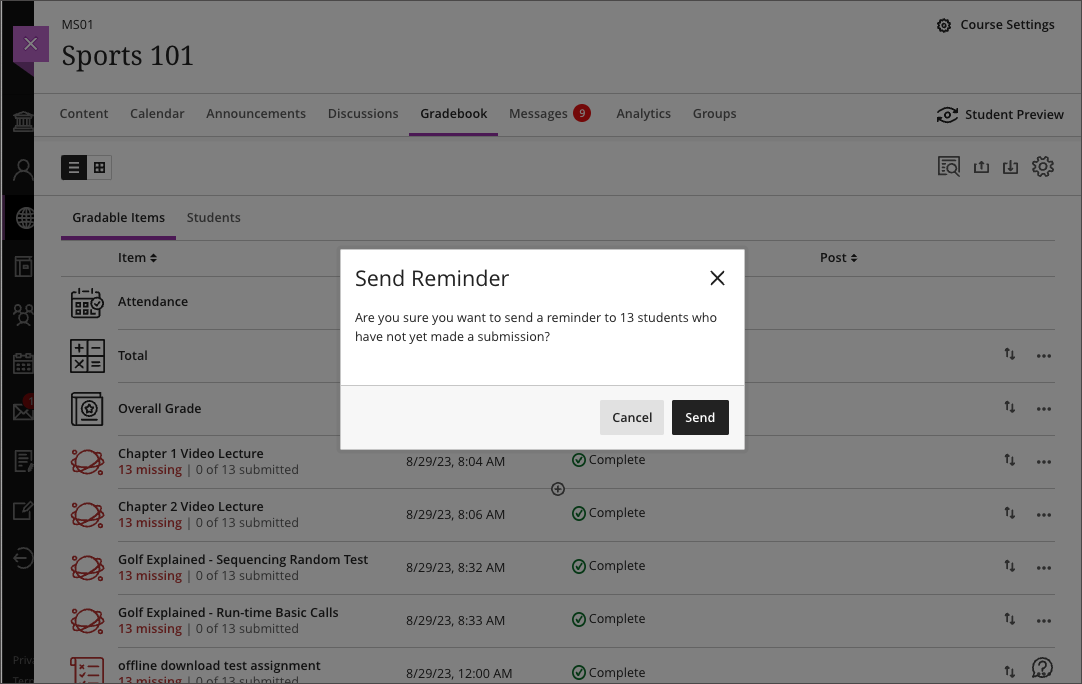
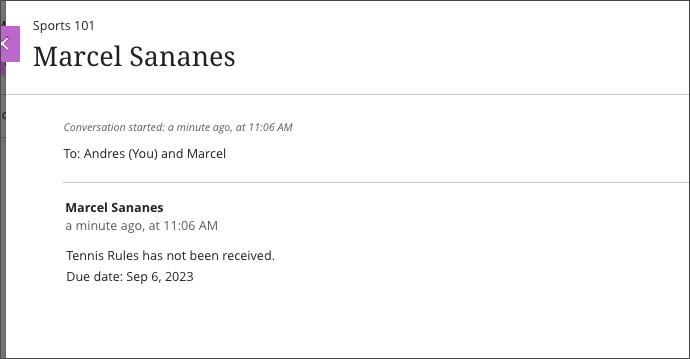
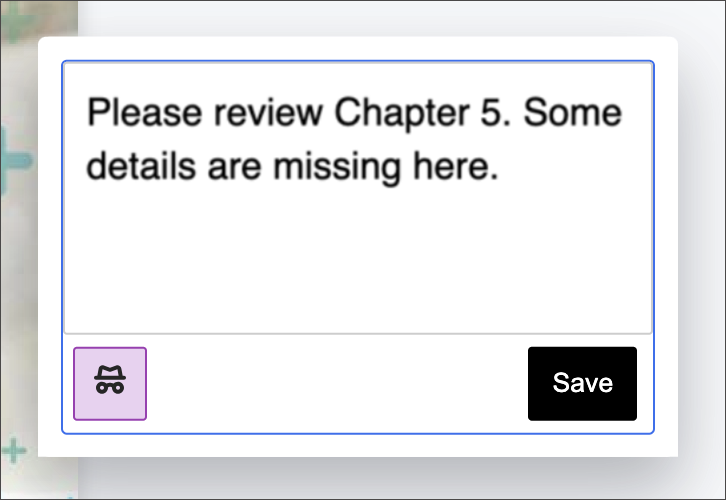
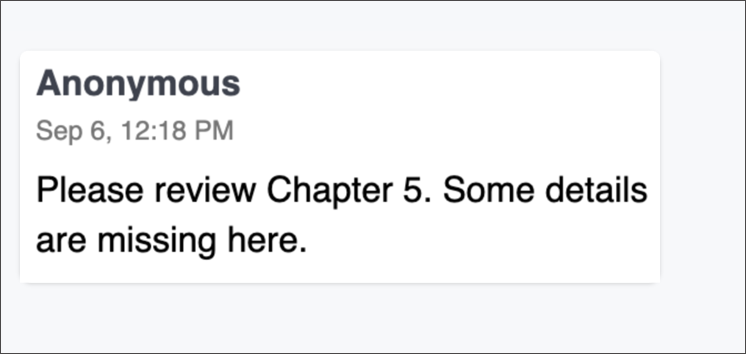
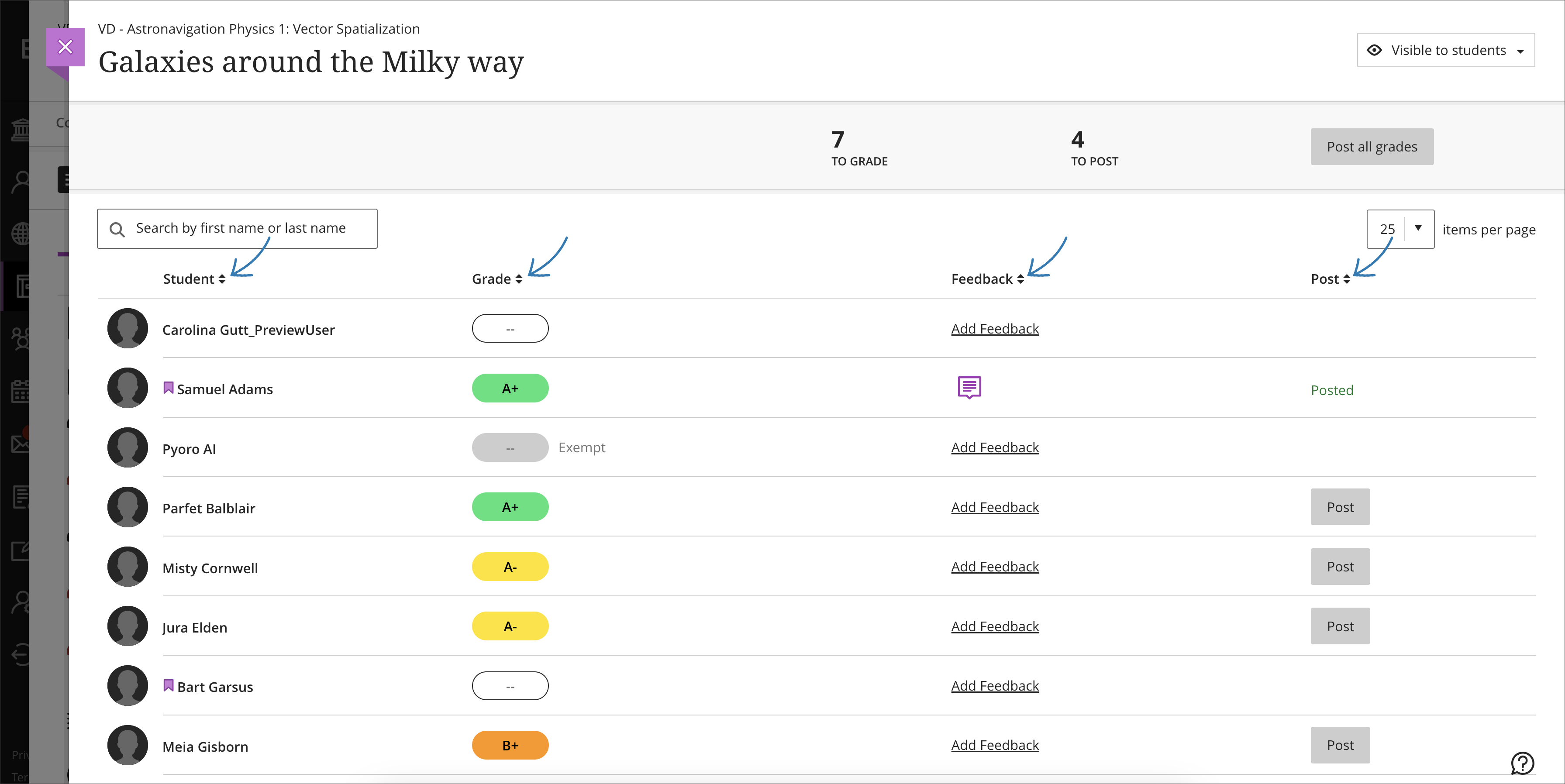
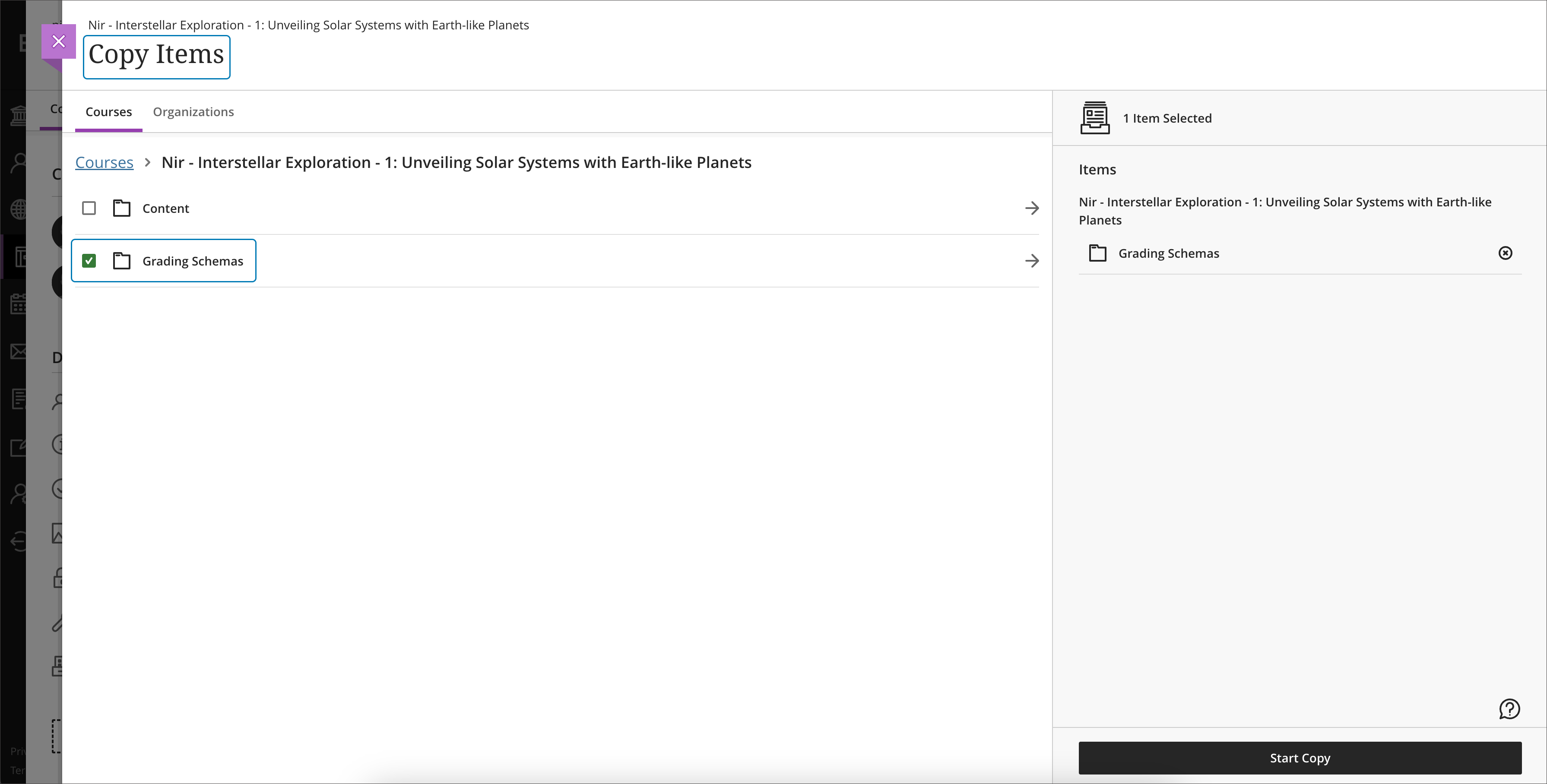
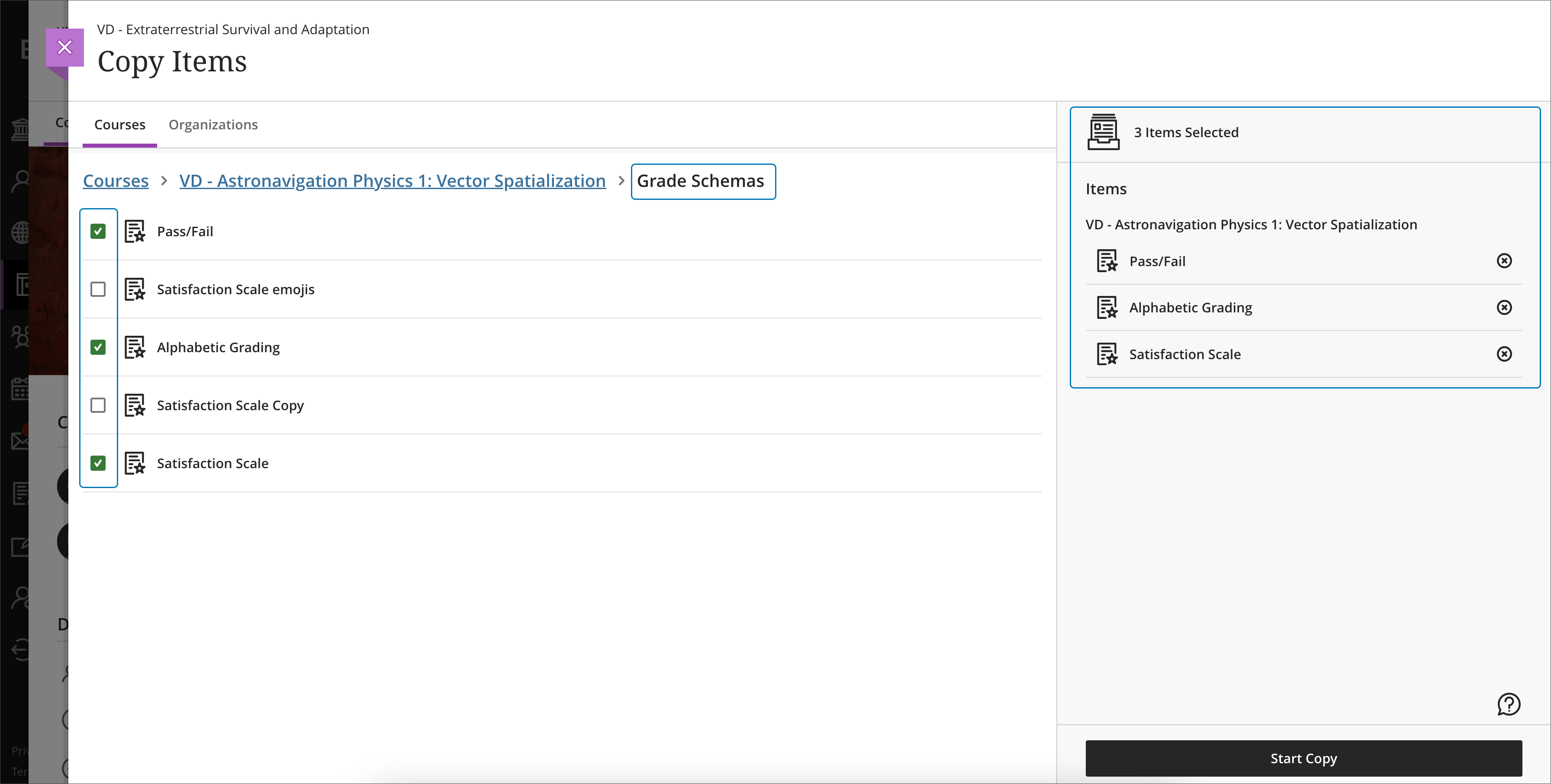
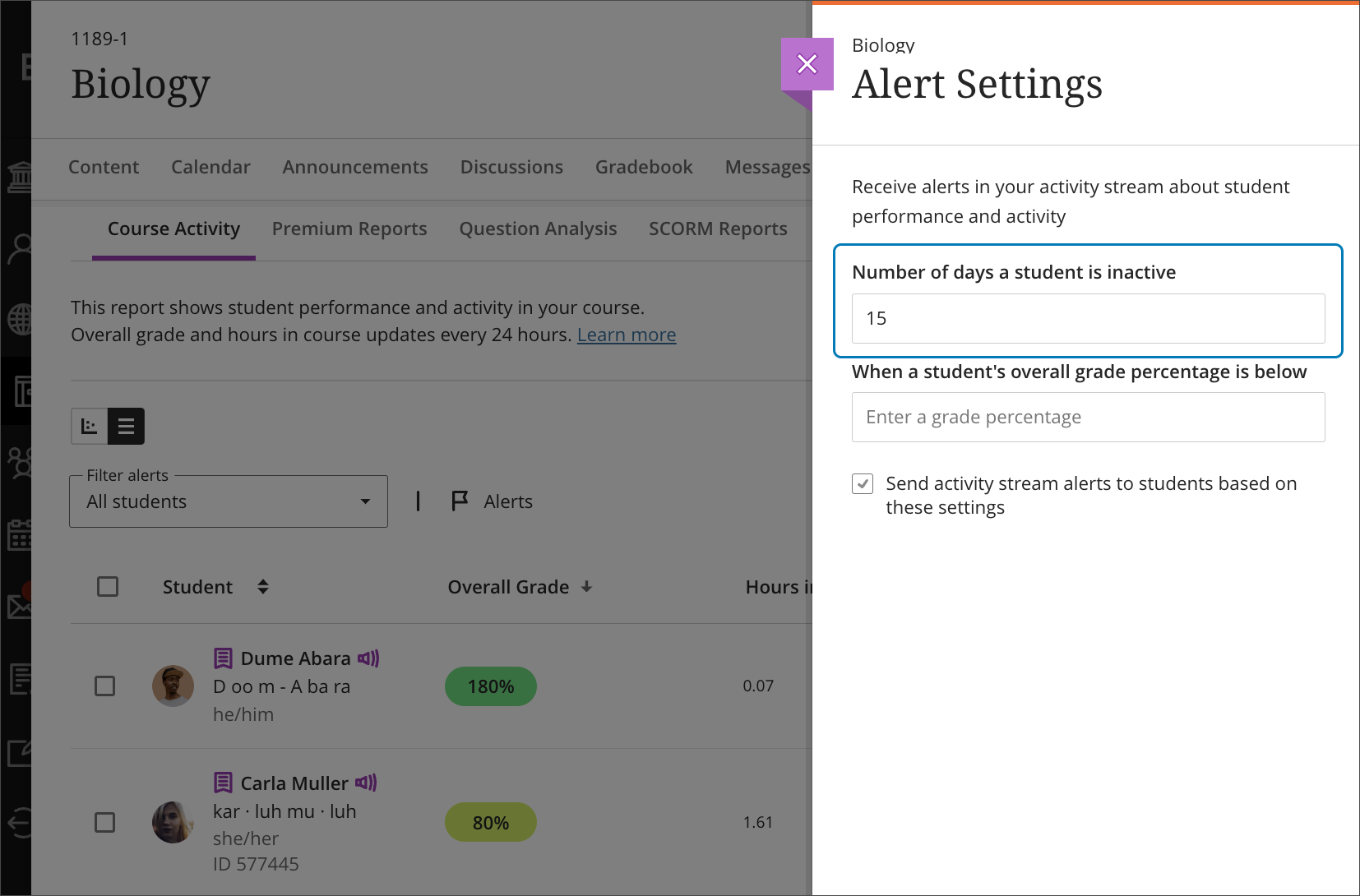
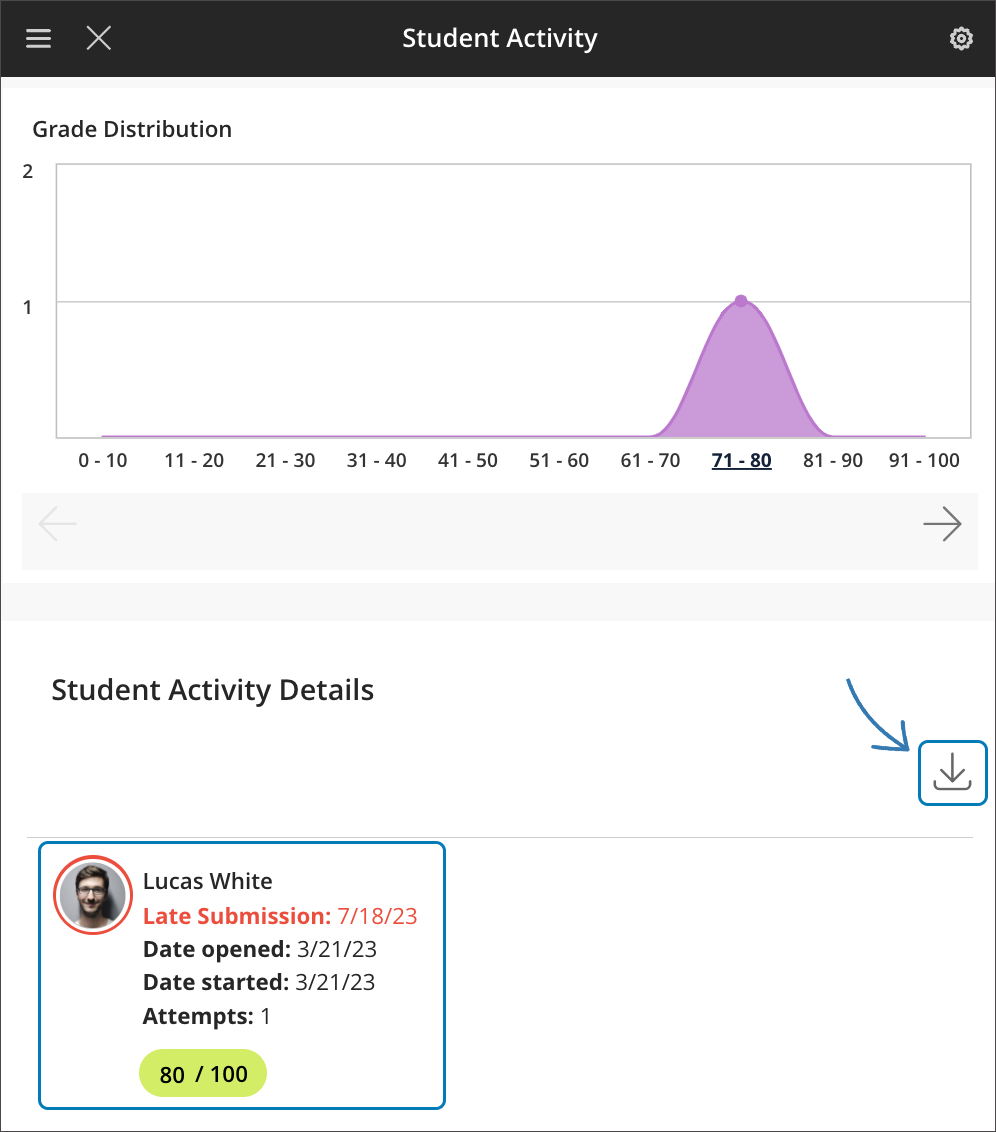
Comments are closed
Comments to this thread have been closed by the post author or by an administrator.